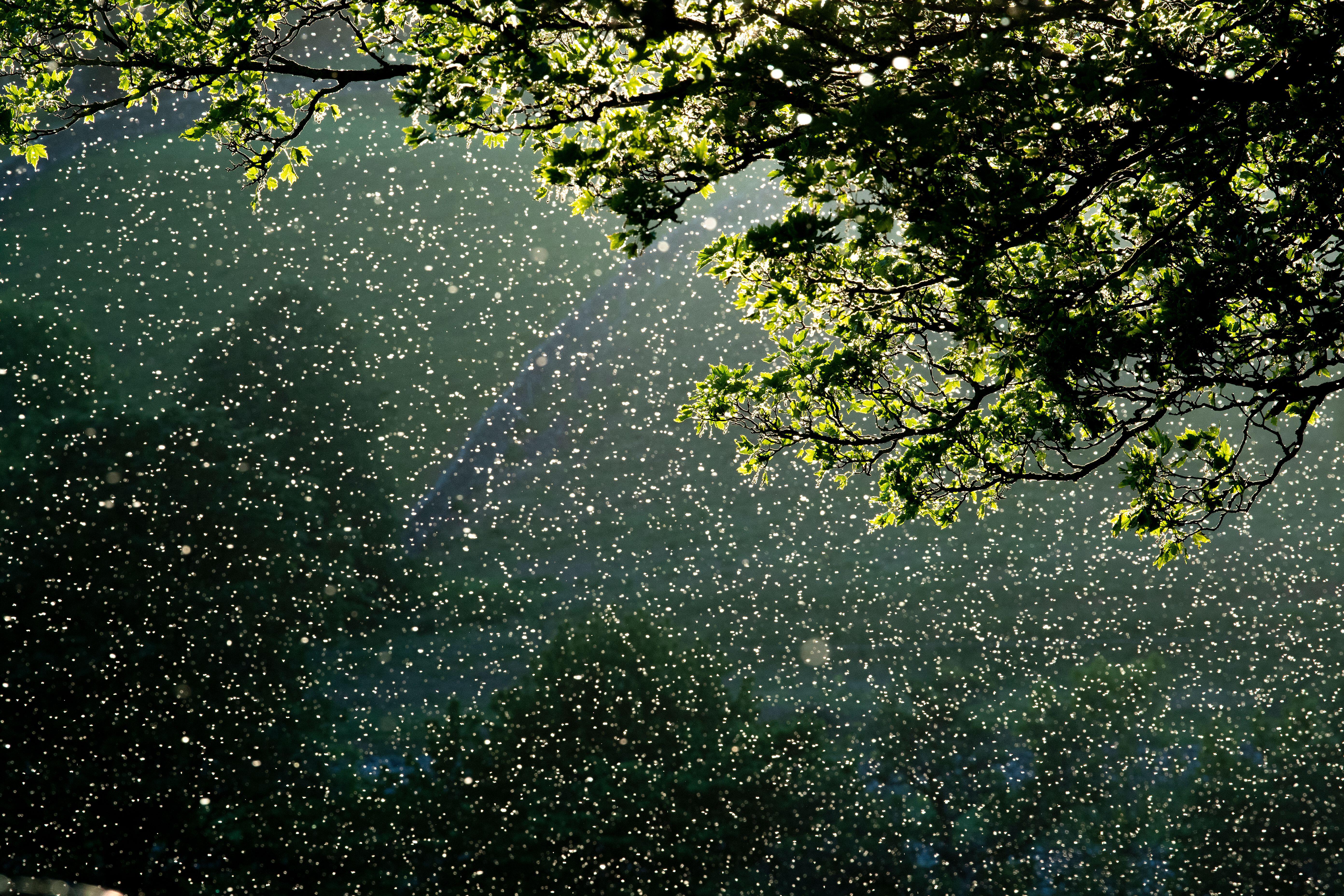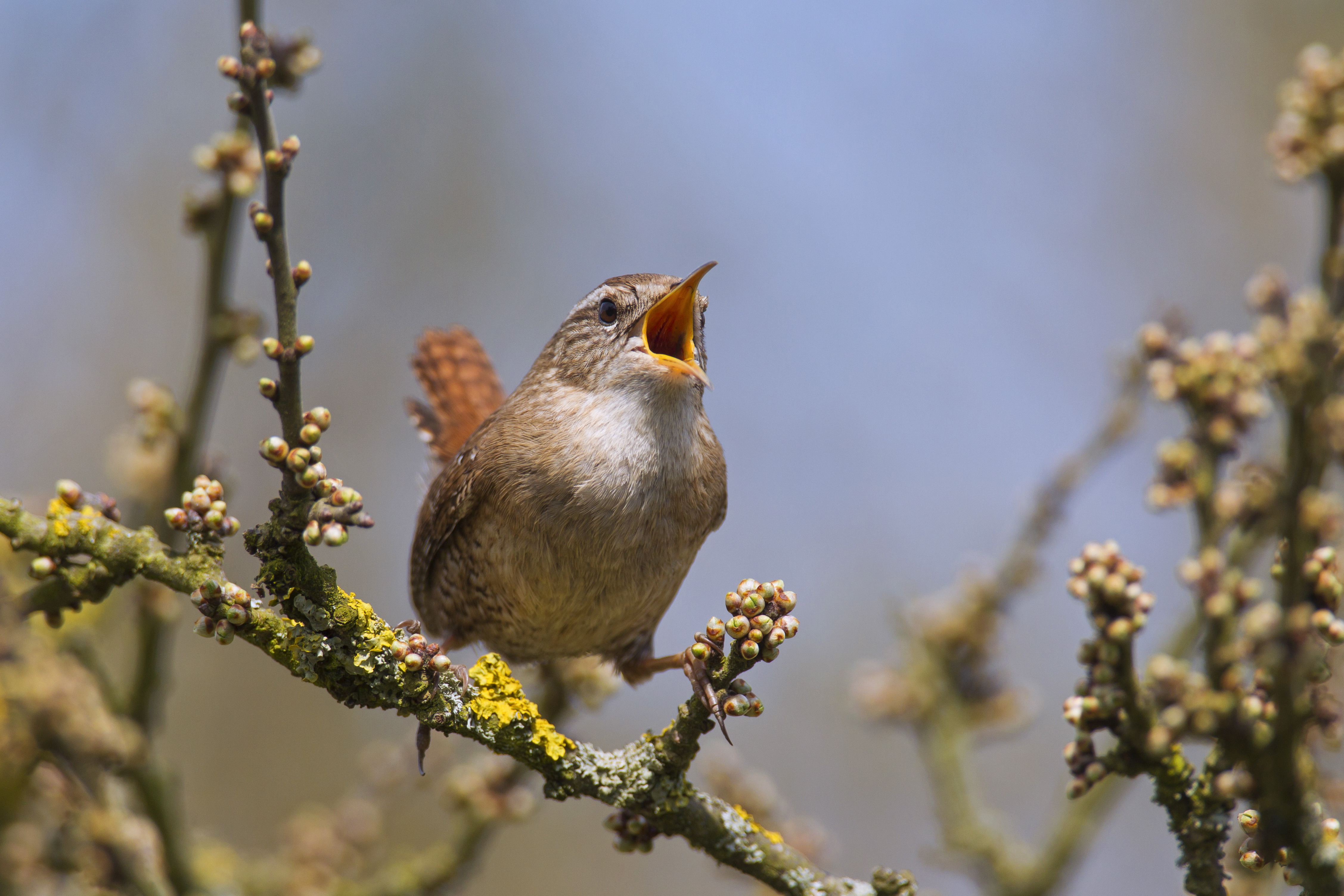Here Today, Gone Tomorrow: 'Nature’s ephemeral beauty reminds us of our own finite existence'
A withering rosebud, the brevity of blossom and the one-day wonder of the mayfly: Nature’s ephemeral beauty reminds us of our own finite existence, but melancholy transience also offers moments of magic.


Early summer is the season of short-lived things. Spring’s sudden showers are succeeded by elusive rainbows, brief blossoms and fleeting glimpses of the sun. Few things epitomise this ephemerality better than the mayfly, an insect the very name of which, Ephemeroptera —from the Greek epi (upon) and hemero (a day) — signifies brevity. Most adult mayflies do not live beyond one day. Yet what a glorious, glamorous few hours of life they have. Clad in silver livery, propelling themselves up into the sunlit air before freefalling down in their thousands, the spinners, as they are known, grab their partners to mate in mid air. Soon, their dance and briefest of encounters is over. The females fall down to the water to lay their eggs and expire — or get snatched by a trout — and the males drift to the riverbank, where hungry birds, frogs and dragonflies await them.
‘The primary function of the adult is reproduction,’ notes Ben Price, principal curator of insects at the Natural History Museum in London. ‘They have only vestigial mouthparts and their digestive systems are filled with air. They can’t feed, so they eventually run out of energy.’ He lists many reasons to find may-flies fascinating, among them their unique and ‘very odd’ lifecycle, as the only insects with two winged adult stages, and their usefulness as water-quality indicators. ‘Their short, but interesting lives remind us to live life to the fullest,’ he adds, philosophically.
The mayfly manifestation is much fêted, not least by trout fishermen, for whom the emergence of one species, Ephemera danica, in large numbers in late May and early June heralds ‘duffers’ fortnight’. This is the time when sudden swarms of the green drake mayfly bring a feeding frenzy of trout to the surface of the river — there is no better opportunity for amateurs to make a catch.
The insect’s common name is linked, like the hawthorn (may) blossom, to the month in which many of the 51 UK species of mayfly appear. Although our changing climate is making this blooming more likely in April than May, the effervescent white and pink blossom, described by David Hockney ‘as though Champagne has been poured over the bushes and it’s all foaming up and it looks marvellous’, is definitely a cause for celebration. A draught of its sickly scent — never to be brought indoors for its association with the plague — lifts the spirits and lets one believe that winter is finally done. As the saying goes, we can now ‘cast a clout’ because ‘may is out’. The reference here is to the blossom, not the month.
Blossom worldwide is celebrated not merely for its beauty, but for its brevity and nowhere is it more revered than in Japan, where the sakura or cherry blossom is the unofficial national flower. People rush to picnic and walk beneath the flower-laden boughs during the short hanami (blossom-viewing) season and the blossom’s arrival makes news headlines. These ceremonies are a commemoration of preciousness, for every bloom is followed by a fading. The fallen petals symbolise the sacrifices of the samurai warriors.
This intensity runs through Japanese culture via a literary and artistic tradition known as mono no aware, which translates as ‘the pathos of things’. Stemming from the 1,000-year-old literature of the Heian period, the idiom originates from an appreciation of the sadness arising from Nature’s ephemeral beauty, such as autumn leaves, the sound of the wind or the absence of a loved one.
Poet Laureate Simon Armitage channelled some of this sentiment last year, when he dedicated a whole volume to tree-blooms in his poetry collection Blossomise, commissioned by the National Trust to bear witness to the arrival of spring. ‘The suddenness of the spectacle provokes an awakening of the spirit,’ he writes in the introduction to the collection. Being a poet, he cannot fail to see a parallel with our own finite existence in the ‘melancholy transience which tells us something about the cycle of life’.
Exquisite houses, the beauty of Nature, and how to get the most from your life, straight to your inbox.
Fleeting moments

Shrew The Eurasian pygmy shrew (Sorex minutus; left) is the UK’s smallest mammal, with an equally tiny lifespan. The oldest live to only 13 months old and mortality spikes for many at about 2-4 months
Earthworm Fully formed at birth, except for its sex structure, which comes 60-90 days later, the garden earthworm (Lumbricus terrestris) generally lives between one and two years
Weasel The UK’s smallest carnivore, Mustela nivalis, is also one of the shortest lived, with an average allotted span of about two years. Only 10% live longer than this
Wren It’s as well that Troglodytes troglodytes (above) is the UK’s most numerous wild breeding bird in the UK, as it typically doesn’t survive beyond two years of age
Worker bee Worker honeybees, the female non-reproductive members of Apis mellifera, live harder and die younger than other members of the colony, typically expiring at 5-7 weeks old. Those that avoid predation or dehydration literally work themselves to death
Flowers The blooms of the morning glory (Ipomoea tricolor; left) open early and begin to fade by mid afternoon. The daylily, named Hemerocallis spp. (from the Greek hemero for day and kallos for beauty), produces a series of flowers that each bloom in a single day
Fleeting beauty has drawn many a poet like a moth to the flame of metaphor. We might think of Shakespeare and Macbeth’s ‘Out, out, brief candle’ speech. Insects, too, find their way into verse. John Clare writes of them ‘mocking the sunshine in their glittering wings’, loving ‘the shine of noon… til night goes to sleep’.
Although few insects have as short an adult life as the mayfly, most others are not long for this world. At two weeks, the adult cranefly’s (Tipuloidea) lifespan is as abrupt as its legs are lengthy. Butterflies and moths, both regular icons of brevity, achieve only a fortnight’s worth of fluttering, yet there are overwintering exceptions, such as the peacock butterfly. Full-grown moths fly for anything from a few days to several weeks, but it must be remembered that these winged creatures are simply one stage of a lifecycle that involves months at the caterpillar and pupae stages.
In life as in art: insects, like flowers, are used to depict transience. In painting, Vanitas works, popular with Dutch painters of the late 16th and early 17th centuries, feature allegorical symbols to show that life is brief and faith is long. In Joris Hoefnagel’s 1594 Arrangement of Flowers in a Vase with Insects, the red admiral butterfly and its caterpillar are larger than the flowerheads of a tulip, roses and columbines. The work also depicts a dragonfly, a beetle and an unidentifiable lepidopteran.
Other symbols used to demonstrate memento mori (remember you will die) are candles and skulls. Two poignant paintings of 1686 by Cornelis van der Meulen depict the marble busts of Prince Ulrik and Prince Gustav, two of the four children lost by Karl XI of Sweden and his wife, Ulrika Eleonora of Denmark, within the space of two years. In one, a withering rosebud; in the other, a soap bubble.
More than a century later, J. M. W. Turner captured Nature’s transient moments in the form of cloud, spray and fog. Rainbows frequently feature in his shifting skies, many faint, as if already fading away, as in A Rainbow, with Cattle (1815) and Rainbow over the Sea, English Coast (1835-40). The Impressionists were all about evanescence and capturing that one moment of light before it disappears. Claude Monet sought the ‘colourful silence’, Pierre-Auguste Renoir the ‘essential something that cannot be explained’.
A different kind of tribute to temporariness was found in the auto-destructive art of Gustav Metzger and Jean Tinguely, who, in the 1960s, respectively used acid to destroy their paintings and made sculptures that battered themselves to oblivion. Perhaps the essence of non-permanent art is Banksy arranging for his 2006 painting Girl with a Balloon to self-destruct at auction. Going even further was the person who sold a video of an original Banksy being burnt and destroyed as digital NFT (non-fungible token) technology for £274,000.
Marvelling at sudden disappearance is nothing new. Mayflies appear in the world’s oldest written text, the Epic of Gilgamesh, of 2000BC: ‘The river has risen and brought us the flood, the mayfly floating on the water. On the face of the sun its countenance gazes, then all of a sudden nothing is there.’ In a season of rapid change, we can acknowledge Shelley’s words: ‘Nought may endure but mutability.’
Laura Parker is a countryside writer who contributes to the Scottish Field, the Dundee Courier and Little Toller’s nature journal The Clearing. She lives in the Cotswolds and keeps a small flock of Shetland sheep. You can follow her on X and Instagram: @laura_parkle.
